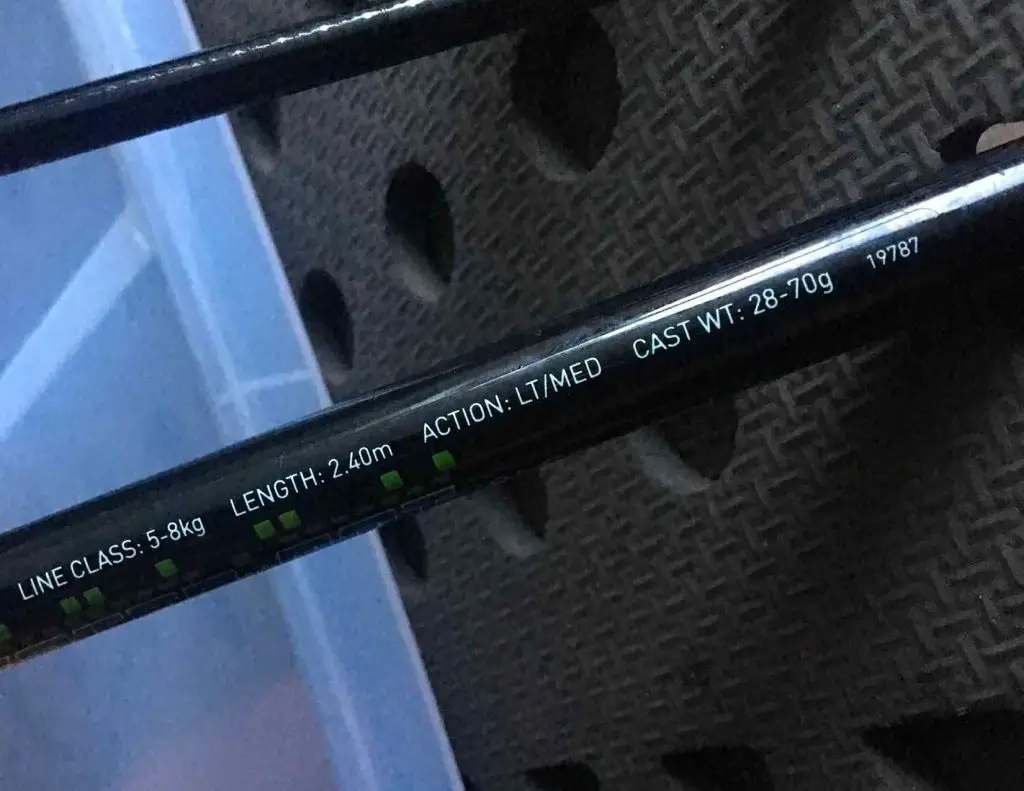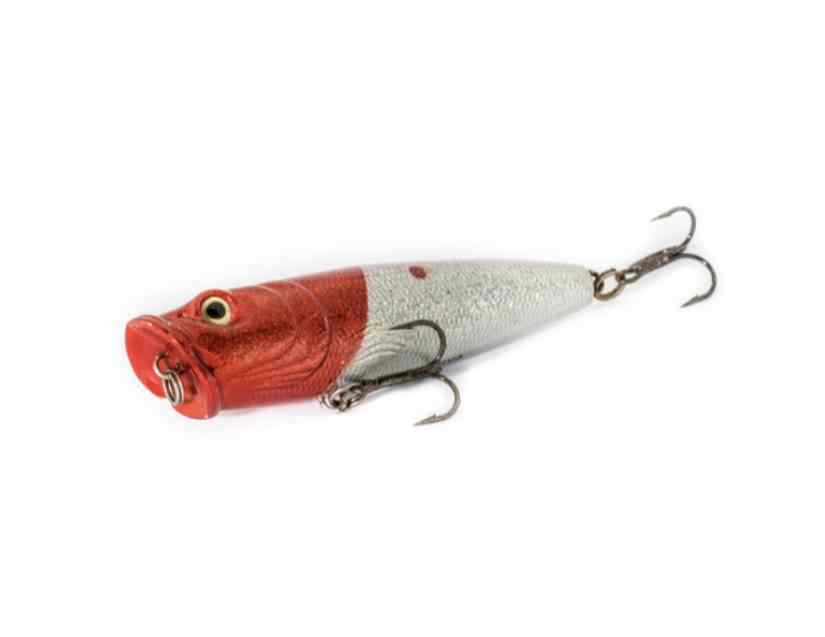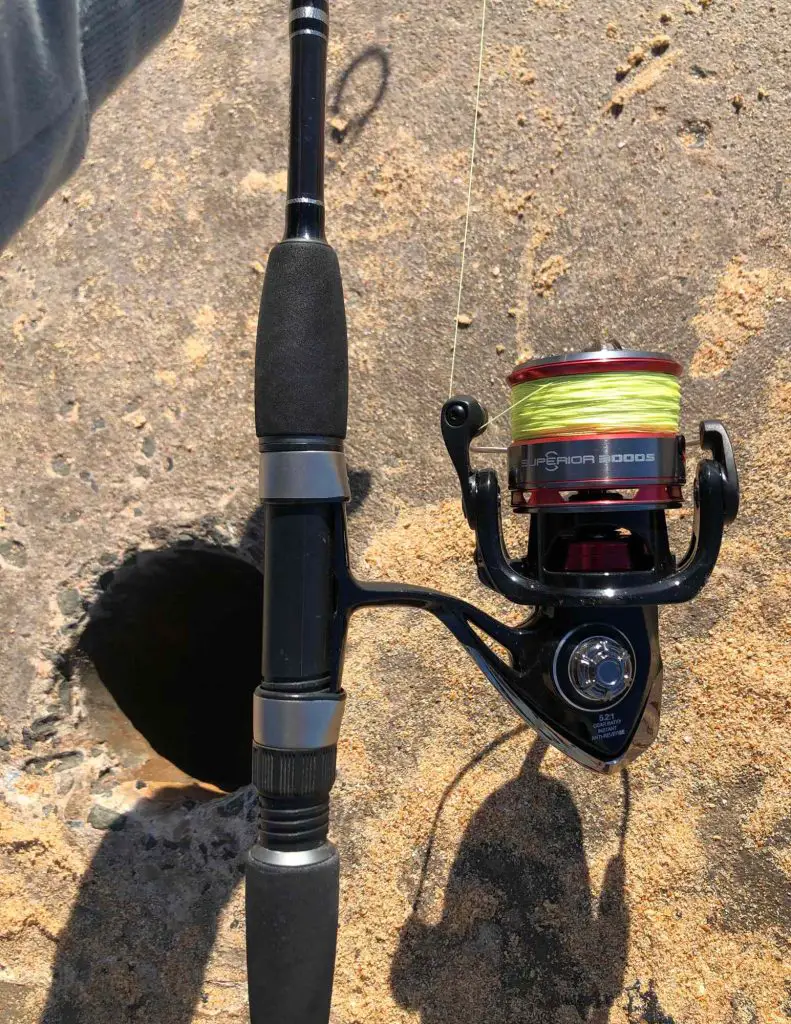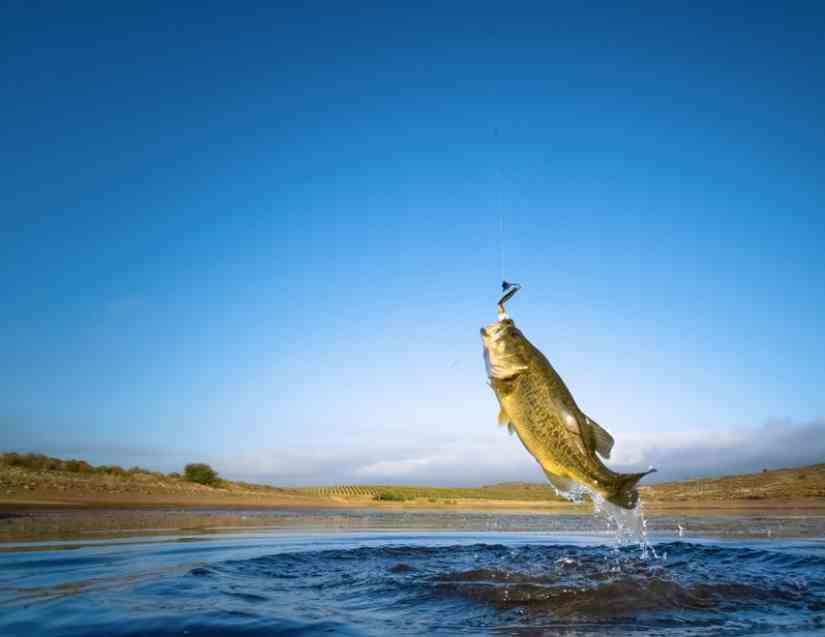
Fishing rods come in all kinds of lengths and weights. And each rod is designed for specific uses and types of tackle.
Matching the right rod to the type of fishing you want to do can be challenging.
This article looks specifically at answering the common query, what is a medium-light rod good for?
Here’s what our extensive research and advice can tell you.
Medium-light rods are typically for lightweight ‘finesse’ fishing, although anglers use the rod for many applications. It’s a favorite for bass but is also enjoyable for crappie, bluegill, perch, and trout. Dropshots, unweighted plastics, shakeyheads, hair rigs, and topwater lures can all be used with a medium-light rod.
Prefer a heavier rod power? Check out our article comparing medium vs medium-heavy rods to help select the right one.
If you need help choosing a rod for a beginner or yourself, this guide may be helpful to you.
- What Does a Medium-light Rod Power Rating mean?
- Medium-light casting and spinning rod uses – top 7!
- When not to use a medium-light fishing rod.
- What fish can you catch with a medium-light rod?
- What tackle should you use with a medium-light rod?
- Medium-light rods vs other power ratings
- Medium power fast action rod – a top choice
- What uses is a medium-light rod good for? Summary.
What Does a Medium-light Rod Power Rating mean?
The power rating of a rod describes the strength of the rod blank. It’s basically a measurement of how much weight or force it takes to make the rod flex and bend over.
The ratings go from ultralight up to extra heavy.
Lighter has less strength, heavier has more strength or power to it.
So a medium-light rod is one up from a light rod, meaning it doesn’t take a great deal of weight.
This makes it a popular choice for targeting smaller species.
Or for particularly skilled anglers who use a combination of the rod’s strength and flexibility, and effective use of the drag on the reel to avoid the rod being overpowered and breaking, even when battling larger fish.
This type of rod does have strength built into the blank while feeling quite lightweight. This is why it’s such a popular power rating used in so many fishing applications.
Let’s take a look at where they can be used.
Medium-light casting and spinning rod uses – top 7!
So, what are medium light rods good for?
Medium-light casting or spinning rods are used for a versatile range of angling applications. Typically they are used in freshwater fishing for species that can put up a good fight against a lighter-weight setup.
In terms of tactics, here are 8 types of fishing that medium-light rods are great for:
Topwater fishing
Smaller topwater crawlers and poppers can be great fun on a medium-light rod.
This type of fishing can often trigger aggressive strikes, which makes fishing on a medium-light rod particularly dramatic and high-energy.

Drop-shotting
Such an easy yet effective way of using a medium-light rod to target species like bass and bluegill, the drop shot rig takes minutes to set up and catches a variety of species. This rig will put you in the striking line of fish waiting just off the bottom and will provide a good fight to have fun with a rod with this power rating.
Soft plastics
Going more broadly than just the drop-shot rig, a range of soft plastic baits, often unweighted with just a hook through are a popular way to target small and largemouth bass, and other species like perch and walleye with medium-light rods. Many brands have huge ranges of soft plastics that are designed for specific water conditions (clear, murky), and also species and habitats.
Hair jigs
These small colorful jigs mimic baitfish or crawfish swimming and bouncing up and down from the bottom of the water. Jerks of the rod tip determine the movement you make with the jig. An old-school but tried and tested way to catch species like bass, and a solid option for using with a medium-light rod.
In-line spinners
I have fond memories of using inline spinners as a kid trying to catch pike in the local canals and rivers, on a 6ft medium-light rod. I always found the cast was very satisfying and you could watch the metal spinner glinting through the water as you retrieved.
Small crankbaits
A medium-light rod can be paired with small crankbait lures to help target fish at different depths. Often anglers will use fast action medium-light rods to have maximum sensitivity to strikes, to be able to set the hook quickly.
Spoons
It’s possible to use small spinning spoons on a medium-light rod too. They’re designed to tempt predatory fish like bass, pike, and perch to strike by creating flashes and vibrations in the water. I find spoons are often good for situations that require a slightly longer cast, due to their weight and streamlined shape,
When not to use a medium-light fishing rod.
While medium-light rods are good for many uses, there are situations where it’s less advised to opt for a medium-light rod. Particularly when you need strength on your side.
Heavy cover
Heavy cover, like tree roots entering the water, thick grass, or lilypads on top of the water can be the cause of a short session if you’ve not chosen the right rod strength.
Trying to drag a lure, let alone a fish, through heavy cover can take a lot of pulling power. With a medium-light rod, heavy cover can really strain a rod, potentially to breaking point.
Surf fishing
When fishing from the beach, you are often targeting larger and faster predatory fish. The larger the size of the fish, the more pressure on the rod.
Also, the conditions of surf fishing are a bit more demanding on a medium-light rod, which may be bending and flexing all over the place with the movement of the swell and breaking waves, making it difficult to spot a genuine bite.
Very large species
Pick your rod power rating in line with the species you are targeting, but also your skills as an angler. There are professional anglers out there who fish ultralight gear yet still bank fish in the 10-15lb region, using both the rod’s abilities and the reel drag to work the fish.
What fish can you catch with a medium-light rod?
In terms of species, medium-light rods are pretty versatile. Let’s have a look at some popular species targeted using this type of rod.
Is a Medium-light rod good for bass?
A medium-light rod can be a great choice for catching bass.
These rods are known for their sensitivity and flexibility, which can help you feel even the slightest nibble on your bait.
When paired with the right reel and line, a medium-light rod can also provide enough power to reel in larger bass while still giving you the control you need to make accurate casts.
Is a medium-light rod good for trout?
Medium-light rods are a good choice when targeting larger trout, or around cover.
The medium-light power gives you a bit more backbone and strength in the rod, while not losing the sensitivity needed for fun fishing.
Typically trout can be caught with lighter rods, but it’s worth upgrading to a medium-light rod if you want to catch some decent-sized fish in tricky circumstances.
Can you use a medium light rod for walleye
I would say that using a medium light rod for walleye fishing can be a good choice depending on the situation and personal preference.
A medium light rod is typically designed to handle lures and baits in the 1/8 to 1/6 ounce range, which is suitable for many walleye fishing applications.
This type of rod can provide a good balance of sensitivity and power, allowing anglers to feel the subtle bites of walleye while still having enough backbone to set the hook and fight the fish.
However, it’s important to note that the choice of rod also depends on the fishing conditions and techniques being used.
If you are fishing in heavy cover or deep water, a heavier rod may be necessary to handle the weight of the lure and the fish.
On the other hand, if you are fishing in clear water with light line, a lighter rod may be more appropriate to avoid spooking the fish.
The other most common species targeted with a medium-light rod are as follows:
- Crappie
- Perch
- Bluegill
- Muskie
- Carp
What tackle should you use with a medium-light rod?

Let’s have a look at a common medium-light fishing rod setup.
Reel
A 1000-3000 (max) reel should see you be able to manage most of the fish you are after with a medium-light rod. Anything larger and the rod and reel will start to feel imbalanced and over the top.
Line
If you’re starting out, anything between 4-8lb monofilament of 15lb braid would be good for a rod rating like this. It will handle the species and sizes you are targeting.
Lures
Typically, lures between the 1/16oz–1/4oz weight will give you enough leverage to cast accurately and the distance you need, but not feel too over the top for your gear.
If you need help choosing a rod for a beginner or yourself, this guide may be helpful to you.
Medium-light rods vs other power ratings
Sometimes it can be difficult to choose between rod power ratings, particularly between those that overlap two ratings.
For example, medium vs light is often a much clearer decision than medium-light vs light rods.
You need to bear in mind that different rod manufacturers’ ratings will be slightly different, but there are still some useful rules of thumb.
Medium vs medium light rods
When it comes to choosing between a medium and medium-light fishing rod, there are several things I like to think about.
As I mentioned above, the power rating of a fishing rod is a pretty important factor that anglers often don’t think about it enough when it comes to picking the right power for what fish they’re targeting.
Fishing style and technique also play a role in determining the ideal power rating for your fishing rod.
Let’s look at comparing medium vs medium light rods…
Medium rods
Medium-power rods require more force to bend than medium-light rods, which are more flexible.
Medium rods are ideal for fishing in freshwater and saltwater environments where you might encounter larger fish species such as bass, catfish, and redfish.
If you prefer to fish in heavy cover or around structure, a medium rod will provide the necessary power to pull fish out of these areas.
A medium rod is generally better suited for those who prefer to fish with heavier lures or bait and require more power to set the hook.
Many of my surf rods are medium power rating because I like to target fish closer in to shore that put up a good fight for a medium rod.
Medium-light rods
Medium-light rods, on the other hand, are better suited for smaller species such as bass or walleye, but on the larger size scale within those species.
If you prefer to fish with live bait or lures, a medium-light rod may be the better choice as it allows for more sensitivity and finesse in your presentation.
Medium-light rods are better suited for finesse techniques such as drop-shotting or jigging.
Verdict
If you want to fish bigger species on heavier gear, you should opt for a medium rod.
If you want to retain a level of finesse to your fishing, but with some strength behind the rod blank, then a medium-light rod is the best choice.
Medium-light vs light rods
Now let’s look at comparing between a medium light and light fishing rod – and the factors that would help determine choosing one over the other.
Medium light rod
If you prefer to fish with slightly heavier lures or use more aggressive techniques such as jigging or flipping, a medium-light rod may be the better choice.
if you are targeting larger species such as bass or walleye, a medium light rod may be the better choice.
A medium light rod has more backbone and can handle the larger lures and more aggressive techniques needed to catch these bigger fish.
Light rod
If you are targeting smaller species such as small panfish or trout, or small bass, or fishing with finesse techniques such as drop shotting or finesse jigs, a light rod may be the better choice.
A light rod is more sensitive and can help you detect even the slightest bites from these smaller fish.
Even small fish will feel like they put up a good fight on a light or ultra light rod set up.
Verdict
If you want to target medium-sized strong fighting fish then the medium light rod is a great choice.
Choose a light rod if you want pure finesse fishing, where the sensitivity is very high and you have to use the rod and reel skillfully in combination to land hard-fighting but smaller fish.
Medium power fast action rod – a top choice
Now, when it comes to picking a medium-light rod, choosing the right action is important to get right too.
Action describes how fast or slow, and how far down the rod the rod tip bends.
A slow action means the rod tip bends far down the rod blank, and that it returns back to the straight position slower than a fast action rod.
A fast-action medium light rod means the tip of the rod is very springy and moves back to the straight position very rapidly after having been bent over.
This is great for hook-setting on predatory fish like bass, walleye, or perch. The fast action on a medium light rod means you have quick, stable hook-setting and also the power required to fight the fish.
Faster action rods can often mean more accurate casts too, especially for beginners who aren’t used to using a slow-action tipped rod.
What uses is a medium-light rod good for? Summary.
A medium-light rod is great for many uses and is a versatile choice for the freshwater angler. Opt for a fast action, because you’ll want to detect bites quickly if using lures, and a modest 1000 or 2000 reel will suit it perfectly.
So if you are wondering what a medium-light rod is good for, or what fish you can catch on a medium-light rod, then take a look at the list above and see if it’s the choice for you.
If you’d rather a rod power with a bit more strength, take a look at our article on medium vs medium-heavy rods.

